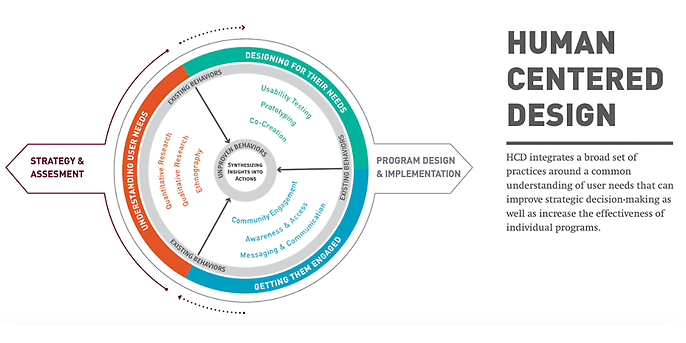25. March 2024 By Björn Becker
User-centred development of medical software: The key role of human-centered Design
When developing medical software, it is crucial that the software is not only functional, but also fulfils the specific needs of both healthcare professionals and patients. Why does human-centered Designplay such an important role here? How is it integrated and what benefits does it bring? In my blog post, I will give you an insight into how human-centered Designmakes an important contribution to improving standards in healthcare.
The importance of human-centered Design
The demands placed on medical software are high: it must not only be functional, but also seamlessly fulfil the needs of medical staff and patients. In this complex environment, human-centered Design is an essential approach to ensure that medical software solutions are not only technically robust, but also take into account the needs and working methods of medical staff and patients in the best possible way. It focuses on placing users at the centre of software development - be they doctors, nurses or patients.
Human-centered Design concentrates on designing software solutions that are not only technologically efficient, but also safe and user-friendly. The focus is less on the pure functionalities of the software and more on creating a self-explanatory, intuitive experience for the user.
By taking the actual needs of the user into account and integrating them into the development process, human-centered Design significantly improves the usability of the software. A human-centered Designmakes it possible to make complex functions more accessible and easier to understand, which ultimately increases the efficiency of medical staff.
Integrating the user-centred approach into software development
Integrating a user-centred approach into the development of medical software is crucial for the efficiency, security and user-friendliness of such programmes. A user-centred approach means that the needs, capabilities and requirements of the end user are at the centre of the development process. One possible approach could be as follows:
At the beginning, a thorough analysis of the requirements of potential future users takes centre stage. This includes qualitative and/or quantifying survey methods (interviews, observation of focus groups, surveys, etc.) with medical and healthcare staff, administrative staff and even patients in order to gain a comprehensive understanding of their needs, workflows and challenges.
The findings form the basis for the design and development of the software. One possible result of these analysis methods are user profiles (also known as personas) and scenarios that depict specific usage scenarios (user journeys, mapping, customer flows, service blueprints, etc.). These help the development team to put themselves in the role of the users and ensure that the software fulfils their requirements.

Illustration of human-centered Design with localisation in the development process and relevant methods, source: h=ps://bitly.ws/39gMz
The subsequent prototyping phase is crucial for the initial design of the software, which lays the foundation for the subsequent software design. This is where (click) prototypes and mock-ups are created and iteratively improved, with continuous feedback being obtained from potential users. Usability tests or A/B tests, for example, play a decisive role in evaluating the user-friendliness, usability and functionality of software. Real users are observed in simulated or real usage situations in order to identify problems and make improvements.
Continuous improvement is also crucial during the implementation process. After the market launch, the software should be constantly monitored and further developed and optimised on the basis of user feedback. New technologies and insights should be incorporated into the development process to continuously improve the software and meet the changing needs of the healthcare system.
It is important to emphasise that the methods presented for integrating a user-centred approach into the development of medical software are only one of many possible approaches. The diversity of users, the complexity of medical processes and the constant development of technology offer scope for a wide range of approaches and methods. For example, design thinking, agile methods or lean principles can also be used successfully to understand the needs of users and implement them accordingly.
The advantages of a user-centred approach
The user-centred development approach offers a number of advantages that have an unmistakable influence on the quality of the software and ultimately on the quality of the work product. A major advantage of user-centred development is the significant improvement in usability. Through intensive research, interviews and observations, the needs of users such as doctors, nursing staff and administrators are understood and integrated into the design. This results in an intuitive user interface and shortens the learning curve for users, which ultimately leads to more efficient workflows.
In addition, a customised solution is implemented for complex working environments in the healthcare sector. Medical staff have specific and specialised requirements and/or workflows that need to be taken into account. By focussing on the needs of the user, the software can be designed to fit seamlessly into these workflows, increasing the efficiency and accuracy of the tasks performed.
In addition, a human-centered Design helps to reduce errors and risks. Through continuous feedback and iteration, weaknesses can be identified and corrected, minimising the risk of operator errors that can have serious consequences in medical practice. This increases the safety of patients and medical staff alike.
Last but not least, human-centered Design promotes the continuous improvement of the software. New technologies and findings can be integrated quickly in order to constantly optimise the software and adapt it to the changing needs of the healthcare system.
Overall, integrating a user-centred approach into the development of medical software leads to higher acceptance, more efficient workflows and ultimately better patient care. It is an investment in the quality and safety of healthcare that takes into account the needs of all stakeholders.
Conclusion
human-centered Design is an indispensable pillar in the development of medical software. It goes far beyond the creation of user-friendly products. It is a way of enabling healthcare professionals to work more efficiently and safely. By focusing on this approach, not only can products be developed that are intuitive and easy to use, but healthcare work processes can also be optimised.
Taking into account the needs and requirements of end users should be a top priority. It is time to change the paradigm of software development and shape the future of medical software by focussing on the needs of those who will ultimately use it. Seeing this approach not just as a means to create products, but as a tool to improve and develop healthcare is hugely important.
This not only opens up new avenues for innovation, but also plays a key role in ensuring that digital tools can provide sustainable and effective added value in the healthcare sector. This is revolutionising not only the way we develop medical software, but also the way we work in healthcare and improve healthcare delivery.
You can find more topics and our services for the healthcare sector on our website.
Would you like to find out more about exciting topics from the world of adesso? Then take a look at our previous blog posts.
Also interesting:

